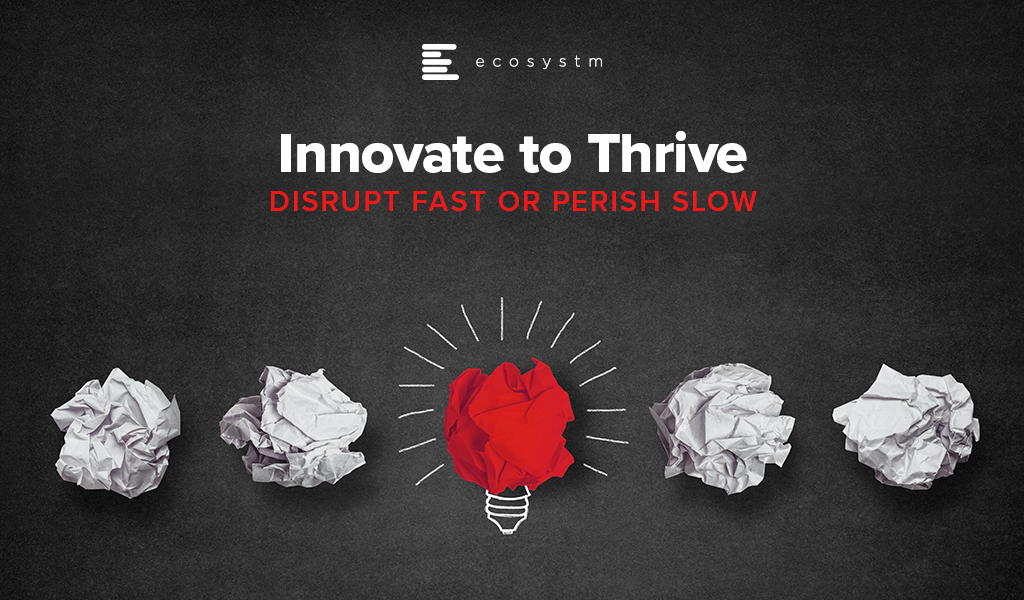Innovation is quite an apt subject to write about – given we are coming to the close of an extremely innovative decade. Contrary to popular conception however, the word innovation is not limited to startups – corporates have ample opportunities to innovate and there are plenty of examples to inspire us.
In the technology industry, the turning point was the rapid scale-up of Amazon Web Services (AWS) – originating from the mothership, they defied all odds and forever changed the way we consume technology, making it more accessible through their cloud offerings. While AWS took the world by storm, most competitors have struggled because they are slow to adapt and transform. For them, this age of innovation has become a burden. The one exception is Microsoft – perhaps the true giant of the industry – that pivoted, and now constant innovation is seeing them consistently jostle for the leadership position. The underlying success factor for innovations is speed – it is of the essence when innovating.
Most companies are unable to promote a culture of innovation into their system, fast enough. Mainly because they are afraid of stumbling on the classic difficulties: “cannibalisation” of the existing business, impossibility to predict with certainty the results of innovation, lack of funding, internal conflict and one-upmanship, lack of understanding of technologies or the challenges of innovation management. Not to mention that taking risks isn’t well regarded in most companies. Most leaders fall in the long-standing tradition of annual P&L management. It’s that temptation of getting by another year of achieving targets. In the end, we are what we measure. The final metric always has to be increased profitability – but it’s all about defining the timescale. Once that’s sorted, the milestones and metrics make Success easier to measure.
The reality is also that the one rarest commodity for innovation is the vision and managed risk-taking ability of the leadership. For this reason, many companies prefer to create a dedicated independent team of corporate mavericks, specifically aimed at innovation. But eventually, the success of these teams is based on rapidly incorporating the innovations into the business – it must reflect in the core corporate ethos of the organisation. Experts debate the benefits of centralised versus decentralised innovation, but what’s most important is to have a dedicated capacity. If innovation is 10% of 100 people’s responsibility, you can rest assured that little innovation will take place. But if it’s 100% of 10 people’s jobs, things will start to happen. Speed is partly born of the priority that is put on it, so assigning - and incentivising - a dedicated team with the job of moving fast is an essential organisational step to innovation.
Easier said than done you say? It becomes even more challenging when you’re trying to achieve this in a large corporate environment. What AWS achieved is world-changing, and one cannot comprehend the vision, capabilities and execution par excellence of the leadership and the team. However, they were building from scratch with a blank canvas – they had the capital, a proven organisational culture of building and arguably one of the strongest leaderships in our generation. But for Microsoft, the storyboard was different. In order to innovate, they had to change the status quo. Yes, they had capital – tons of it – however, they also carried tremendous ‘baggage’. Ironically, it’s this baggage that corporations strive to achieve and only some manage – it’s called ‘legacy’. It can come back to bite you and hold you back when you need to rapidly adapt and innovate. But that is what Microsoft achieved – they overcame the fear of cannibalisation, put aside all the internal posturing and one-upmanship and more importantly, built a culture of innovation. Something that was led impeccably by Satya Nadella who allowed rapid innovation and ensured that the entire organisation got behind the ‘cloud-first’ vision.
Companies that are built for speed react more quickly to competitor moves or market shifts with their own product innovations. Fast innovators test prototypes with customers, worrying less about the imperfections that they know are there and focusing more on the insights they may gain from consumer reactions and feedback. They also fail several times – but they fail fast and cheap.
To sum it up, organisations that innovate successfully are fast to respond to the market, are led by a vision, have a culture of innovation, are not afraid to fail and they don’t ever let perfect get in the way of better!
As published in the tabla! (An SPH Publication)


